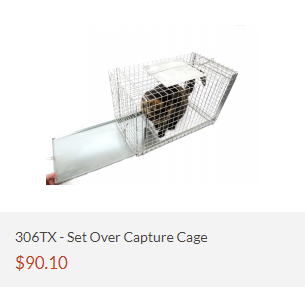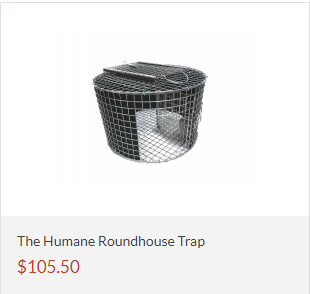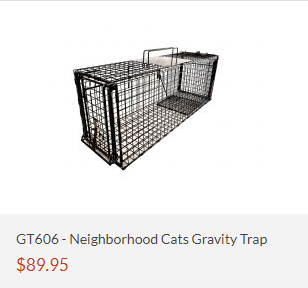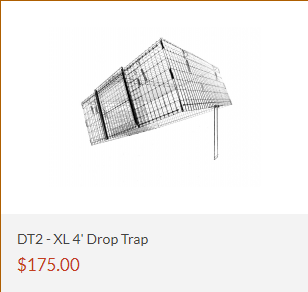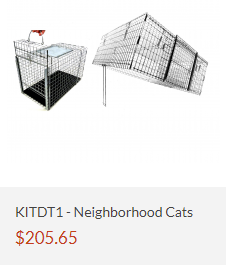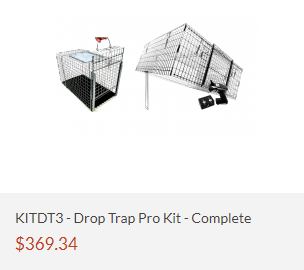Trapping
Traps May Be Available For Loan
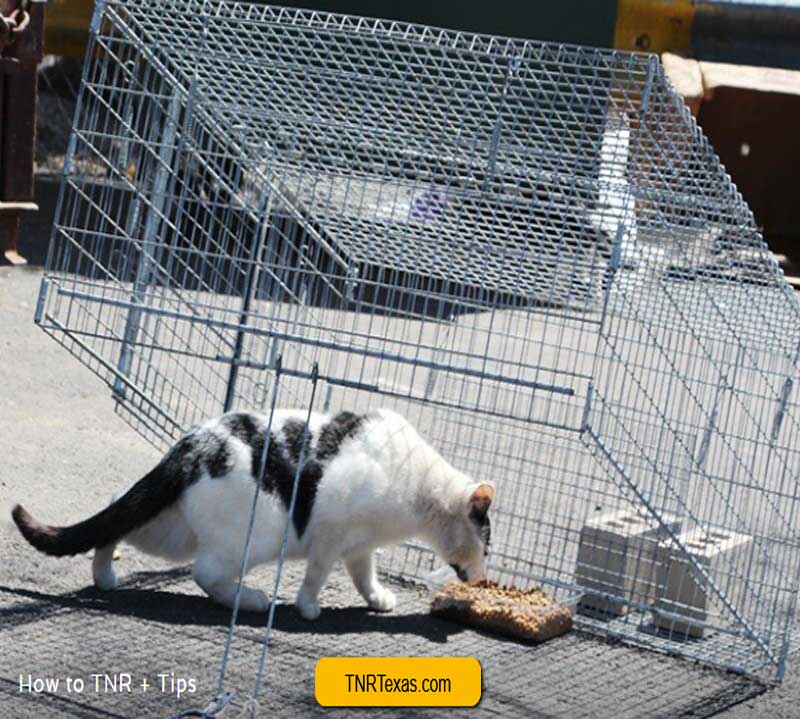
The humane and safe trapping of feral and stray animals is essential to TNR programs and also for being able to provide medical care to animals in need that cannot be approached.
Multiple trapping strategies may be employed calling for trappers to be available on short notice, at odd hours and for sometimes for extended periods of time.
Trapping may occur one day (or earlier) before a scheduled spay or neuter appointment so the animal only needs to remain in confinement a short while.
In other cases trapping may need to occur immediately due to an animal's medical needs or because displaced Queens and kittens need to be reunited asap.
After animals have been successful trapped they may be boarded or fostered by other volunteers depending on animal circumstances and available resources.
For more info about becoming a humane trapper helping save the lives of stray animals, email trapping@txcat.org
Which Capture Device Is Best For Your Cat Circumstances?
A variety of traps may be available for loan at no cost to approved trappers.
The proper trap selection can help enable the safe and humane capture of stray or feral cats.
Different traps may be better suited for different cats depending on their degree of feralness or friendliness.
IMPORTANT: Keep in mind that cats are SMART and a failed trapping attempt that scares them may result in the target cat NEVER approaching a trap or cage again, so plan ahead a bit and do it right the 1st time.
ADDITIONALLY: Cats that observe another cat in a trap or hear them crying in a trap may also refuse to approach a device that they recognize as a trap or cage after witnessing another cat being trapped. Making sure the trap is entirely covered may help prevent observer cats from becoming fearful before you are even trying to capture them.
Cats that are friendly enough to be coaxed into a standard pet carrier or that can be picked up do not need not be trapped. Friendly cats should not be trapped as it unnecessarily stresses them and may reduce their trust of whoever is involved in that experience.
Being trapped is stressful for cats, but trappers can do several things to help minimize stress for them.
- Select a trap suited to the cat's temperament.
- Set Over Capture Cage for cats that are easily approachable, but impossible to pick up.
- The Humane Roundhouse Trap – This trap features a removable bait dish, internal plastic cover to keep trapped animals calm and an easy release door for easy baiting, transfer and release. Circular design and special door closure makes it very safe for the cats and very unlikely to harm even small kittens.
- Neighborhood Cat Gravity Trap No springs are involved. This makes the trap quieter than a spring-loaded model and virtually eliminates any risk of injury to a cat or kitten from the falling door.
- Drop Trap 36″ or Drop Trap 48″– A Drop Trap is excellent for trapping shy cats that are hard to catch or for catching multiple cats at one time. Trap is manually operated by pulling a string to drop the trap.
Note: Unlike the other traps, moving the cat(s) out of a Drop Trap requires an additional Transfer Cage because the drop trap has no bottom and is not a full enclosure.
Option: A remote control (instead of string) is available only for the 36″ version.
- HOW TO USE A DROP TRAP:
- Cover the trap if it does not come with a cover, so the cat is in a darkened space as soon as the trap is triggered.
A trapped and scared cat can hurt themselves almost immediately running into the trap or cage walls trying to escape. They are likely to do this vigorously when the trap or cage is uncovered.
When the trap or cage environment is dark or goes dark immediately when the trap triggers, the cat is likely to be a bit calmer and less likely to harm themselves running into the trap or cage walls trying to escape. The Humane Roundhouse Trap has a built in cover and its round shape eliminates much of the the hazard of cats crashing into trap or cage walls
- Before trapping day, (if feasible) place the trap in position and configure it so it will not trigger. Then put food in it twice a day for a few days before the actual target trapping date. This can help accustom cats to arrive on your schedule and to approach and/or enter the trap or cage in a timely manner so that on the target date, they are a bit more predictable and catchable.
- Place the food attractant and the food trail strategically.
- Allow the cat to calm a bit under cover after capture and before moving them.
For example, if the cat is still eating after being trapped, then it is likely very hungry and allowing it to finish the food you placed in the trap may help calm it down.A hungry cat will certainly be more temperamental than a satiated cat, so unless the cat is being transported the next morning for spay or neuter, then allowing them to eat and calm down a bit before moving may reduce their stress.
CAVEAT: However, if your plan is for them to have surgery the next morning, then they should not have food or water after midnight the night before according to most vets.

